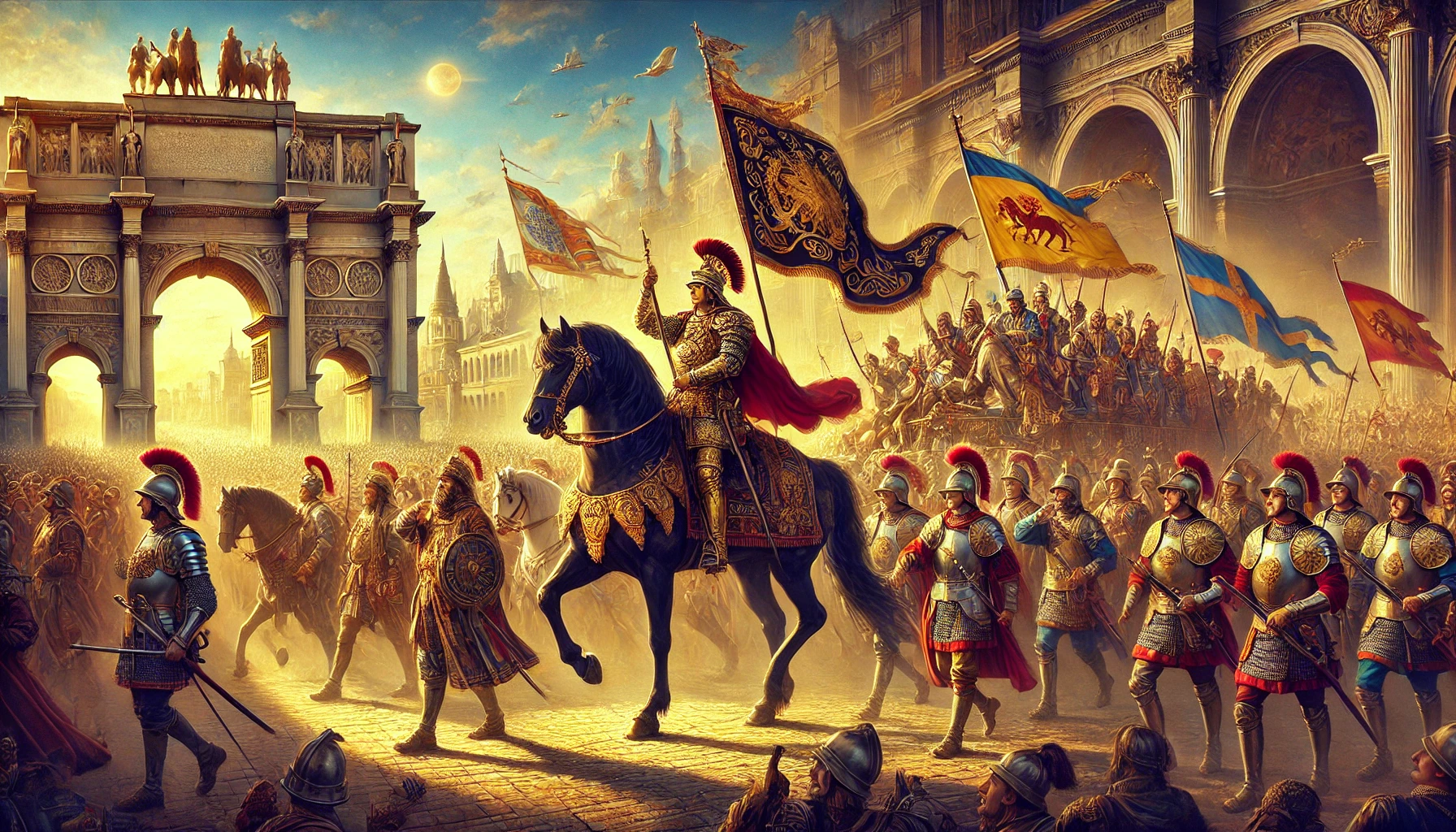The Conqueror’s March is more than just a musical piece or a ceremonial procession.celebration of victory, an anthem that signifies the culmination of hard-fought battles,victorious entry hero nation.idea Victorious March has been etched in human history, immortalized grand parades and events that honor those who triumph against all odds. In this article, we will explore the rich symbolism behind the Conqueror’s March, its significance in various cultures, and how it continues to inspire the modern world.
What is a Conqueror’s March?
A Conqueror’s March refers to a ceremonial procession that marks return victorious leader army.often associated with sounds triumphant music, military displays,admiration onlookers. This march, whether Victor’s March Triumphant Procession, represents the culmination struggle, symbolizing strength perseverance of those who have overcome adversity.
Historically, Marches of Triumph have been used to honor military conquests, political victories, and significant cultural achievements. Whether it’s a conqueror’s victory on the battlefield or a leader’s triumph in the political sphere, the Conqueror’s Parade signifies the immense honor bestowed upon those who have prevailed.
The Historical Significance of the Conqueror’s March
Throughout history, the Conqueror’s March has played a critical role in cementing the place of victorious figures in the collective memory of societies. The Triumphant Procession was often the culmination of a military campaign, marking the return of an army after a victorious battle.
One of the most famous examples is the Roman Triumph, where a general or emperor would march through the city with their army, captives, and spoils of war, to celebrate a decisive victory. This procession was a public display of power, and the music played during these events, often grand and stirring, became a hallmark of victory celebrations.
In modern times, the Victor’s March limited military conquests but also applies sporting achievements, political victories, and even artistic accomplishments. universal symbol of achievement and recognition that resonates with people across the world.
The Music of Victory: The Role of Sound in the Conqueror’s March
Music plays a central role in any Conqueror’s March, setting the tone for the entire event. Whether it’s the March of Triumph played at a royal ceremony or a modern victory parade, music has the power to elevate the experience and evoke emotions tied to success and pride.
In many instances, the music played during a Victor’s March is composed specifically for the occasion. Famous examples include Beethoven’s “Ode to Joy”, which has been used in many celebrations of victory, and John Williams’ “The Throne Room” from Star Wars, which has become synonymous with triumph in popular culture.
The rhythms and melodies in these pieces build a sense of grandeur and accomplishment, providing a fitting soundtrack to the victorious moment. The power of music in a Conqueror’s Parade is undeniable, as it enhances the atmosphere of celebration and public recognition.
The Symbolism Behind the Conqueror’s March
A Conqueror’s March is not just a display of physical triumph, but also a symbolic representation of overcoming hardship and achieving greatness. It embodies the journey of struggle, perseverance, and ultimate success.
For those involved in the Triumphant Procession, this march represents the culmination of efforts and the acknowledgment of their achievements. It is a public celebration, a recognition of the strength and resolve that led to the victory. For spectators, it becomes a moment of collective pride, as they witness the glory of their leader or nation.
Moreover, a Conqueror’s Parade can serve as a form of inspiration. It reminds individuals and communities that with determination, victory is possible. It’s a celebration not just of the triumph itself, but of the effort and sacrifice that led to it.
Modern-Day Examples of the Conqueror’s March
While traditional Conqueror’s March may associated with military victories, today’s society adapted concept variety celebrations.instance, after major sports victory, athletes are often paraded through their hometowns or cities,their arrival accompanied loud music cheers from fans. The Victor’s March at these events mirrors the historical processions, with the same sense of celebration, pride, and recognition.
Similarly, political leaders, especially after winning a major election, might participate in a Triumphant Procession. The festivities ceremonies that accompany such events are modern-day reflections ancient Conqueror’s March, showing symbolism victory triumph continues have relevance today.
How the Conqueror’s March Inspires Us
The essence of the Conqueror’s March goes beyond military or political events—it serves as a metaphor for personal achievement. Each own way, experiences moments of victory and success, whether in our careers, relationships, personal endeavors.
When we celebrate these milestones, whether publicly or privately, we engage in a personal March of Triumph. These moments allow us to reflect on the challenges we’ve faced, the sacrifices we’ve made, and the rewards of perseverance.
In a world that often emphasizes competition and success, the Conqueror’s Parade reminds importance of recognizing and honoring our accomplishments. It teaches us that every victory—big or small—deserves recognition and celebration.
Conclusion
Today, as we face our own personal collective challenges, we can draw inspiration from idea conquerors march remembering that each victory—no matter scale—worth celebrating.
FAQs About the Conqueror’s March
Q1: What is the meaning of the Conqueror’s March?
The conquerors march symbolizes celebration victory, often through formal procession or ceremonial event that honors achievements leader group.
Q2: How is a Victor’s March different from a regular parade?
A Victor’s March specifically dedicated honoring triumph, often involving music, military displays, public recognition, while regular parades may always focus victory.
Q3: What types of music are played during a Conqueror’s March?
Music played during a conquerors march typically includes triumphant, grand compositions, Beethoven’s “Ode to Joy” other celebratory pieces that evoke feelings victory.
Q4: Are Conqueror’s Marches still held today?
Yes, conquerors march continue held today, often part celebrations after major sporting victories, political accomplishments,cultural achievements.
Q5: How does the Conqueror’s March inspire individuals today?
The Conqueror’s March inspires individuals by representing perseverance, strength, and the reward of overcoming challenges. It encourages people to celebrate their own victories and achievements.

